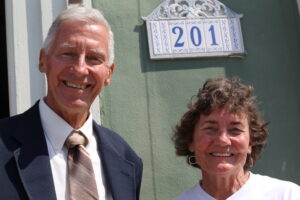 Barron G. Collier established Everglades City in 1923, which became the first county seat of Collier County and was also the construction headquarters during the building of the Tamiami Trail connection between Naples and Miami, present-day Dade County. In 1927 the historic bank building was completed and served as the main branch of the Bank of Everglades until 1962 when it moved to Immokalee. The bank was on the first floor and the second floor was home to Collier County News (now Naples Daily News), the District School Board, Humble Oil Company (now ExxonMobil) and others.
Barron G. Collier established Everglades City in 1923, which became the first county seat of Collier County and was also the construction headquarters during the building of the Tamiami Trail connection between Naples and Miami, present-day Dade County. In 1927 the historic bank building was completed and served as the main branch of the Bank of Everglades until 1962 when it moved to Immokalee. The bank was on the first floor and the second floor was home to Collier County News (now Naples Daily News), the District School Board, Humble Oil Company (now ExxonMobil) and others.
“Barron Gift Collier, to me, had such a vision and a dream of what this town could be,” said Patty Huff, ESHP President. “Over the last 50 years we haven’t given his vision enough respect. We have to do the hard work to save it.”
After the bank moved its headquarters, the building had several owners and served different functions including being used as a boarding house and eventually a historic bed and breakfast. Owners Robert and Patty Flick, whose daughter Patty operated the bed and breakfast, were pivotal to having the building placed on the National Register of Historic Places. The bed and breakfast closed in 2017 shortly before Hurricane Irma damaged the building including all of the antique furniture. Only the original floors and bank vault were salvageable.

“It’s crucial and it’s important not only for the history but for the future. This is a wonderful tourist destination. It’s amazing to know my grandfather was instrumental in building this building and now 100 years later, the building has gone through every hurricane, and it still stands.” said Barron “Barry” Collier III.
In 2021, the Flicks donated the bank building to the Everglades Society for Historic Preservation (ESHP) which has taken on the task of restoring the structure to be a functioning historic landmark for Everglades City. Once completed, the building will be the home of the Everglades Area Visitors Center.
The ESHP organization has worked continuously since acquiring the building by cleaning out damaged furniture, raising funds for the restoration project, and securing architectural firms and hiring engineers. They anticipate the restoration project will take several years to complete. For more information and to see the project’s progress, visit www.eshp.org.


